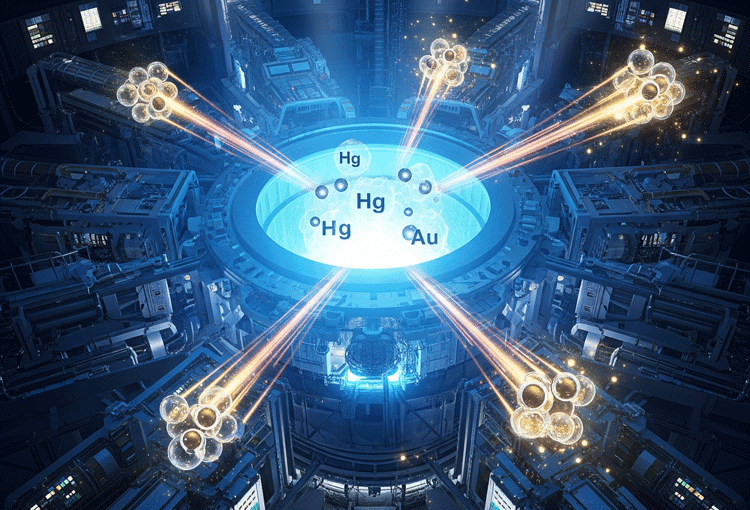Element engineering is rapidly emerging as one of the most groundbreaking fields in modern science, promising to reshape how we build, heal, and power the world. By designing elements at the atomic level—rather than simply using what nature provides—we’re entering an era where the periodic table becomes a toolkit, not a limit. So, what’s coming next in this revolutionary shift? Let’s take a look.
Engineering the Elements: A New Frontier

Element engineering is the science of manipulating, designing, or even creating chemical elements beyond what the periodic table currently offers. While traditional chemistry works with naturally occurring elements, this emerging field pushes the boundaries of what nature provides—introducing synthetic atoms, designer isotopes, and element-level customizations for advanced technologies. As science moves further into the atomic realm, we are entering an age where nature itself becomes an editable system.
Why now? Our technological appetite is growing. We demand faster processors, cleaner energy, lighter vehicles, and more targeted medical treatments. But the elements we rely on are limited in number and functionality. Element engineering promises to fill this gap by rethinking what the basic building blocks of matter can be.
From Alchemy to Atomic Precision
Human fascination with altering matter dates back to alchemists trying to transform lead into gold. Today, we have particle accelerators and quantum computers attempting similar feats—with real science behind them. (Curious how this connects to modern fusion experiments? Read our article on turning mercury into gold).
Modern element engineering builds on breakthroughs in nuclear physics, materials science, and artificial intelligence. Scientists now simulate atomic behavior at quantum levels to predict the properties of hypothetical elements. These are not mere daydreams; supercomputers have helped identify theoretically stable elements that do not yet exist in nature but may be synthesized in the lab.
The goal is not just to create exotic atoms, but to design elements with specific traits—like superconductivity at room temperature or extreme corrosion resistance. Element engineering techniques powered by AI play a growing role here, predicting which atomic configurations are worth pursuing long before any real-world experiment begins.

Real-World Applications on the Horizon
1. Clean Energy Revolution
Next-gen nuclear fusion may depend on custom isotopes that optimize energy output while minimizing radiation waste. Engineers are already exploring isotopically engineered hydrogen and helium variants.
2. Space-Grade Materials
The demands of deep-space missions require materials that are ultra-light, heat-resistant, and radiation-absorbent. Element engineering could produce new alloys or compounds designed specifically for Martian or lunar environments.
3. Smart Therapeutics
Medical isotopes with controlled half-lives could enable hyper-targeted radiation therapies. Rather than blasting surrounding tissue, next-gen isotopes would deliver radiation only to tumor cells and decay harmlessly.
4. Ultra-Fast Electronics
Silicon is reaching its physical limits. Element engineers are experimenting with carbon-based successors and beyond—even considering fully synthetic conductors that perform better at nanoscale levels.
5. Green Catalysts
Creating elements that act as ultra-efficient catalysts could revolutionize everything from hydrogen fuel production to carbon capture. This means cleaner industries and reduced greenhouse gas emissions.
The Challenges We Must Overcome
This futuristic vision comes with massive hurdles. First, atomic-scale manipulation requires extreme precision and enormous energy. Synthesizing even a single atom of a new element can take months or years.
Second, many engineered elements are inherently unstable. They decay within milliseconds, making them difficult to study or utilize.
Third, ethical and safety concerns are growing. Creating powerful new isotopes raises fears of misuse or unintended consequences. Who gets to decide what new elements are allowed? Global standards don’t yet exist.
Lastly, the path from laboratory breakthroughs to commercial-scale application is complex and expensive. Even if we create a game-changing element, scaling its production might remain out of reach for decades.
Future Outlook: Designing Nature Itself

Despite the challenges, the momentum behind element engineering is undeniable. AI is dramatically accelerating discovery by analyzing billions of atomic combinations in silico before a single test tube is touched.
Soon, we may enter an era where materials are not discovered—but designed. Instead of asking “What can this element do?” we might ask, “What properties do we need, and what element can we build to match them?” In this future, element engineering and atomic-level customization could become the norm, powering innovations across every major industry.”
Imagine custom-built atoms for:
- Batteries that charge in seconds and last decades.
- Implants that fully dissolve once healing is complete.
- Sensors embedded in clothing that change color based on air quality.
All of these could stem from an ability to engineer elements from the nucleus up.
What the periodic table did for 20th-century science, element engineering might do for the 21st and beyond. It won’t just add new squares to the table—it may reinvent the table itself.
Conclusion: Unlocking the Atomic Future
Element engineering stands at the threshold of a profound transformation in how we understand and interact with the material world. It shifts our role from passive users of natural elements to active designers of them.
As research accelerates and boundaries blur between science fiction and lab reality, this field could redefine not just what we build—but what is even considered possible.
Element by element, the future is being written.

















